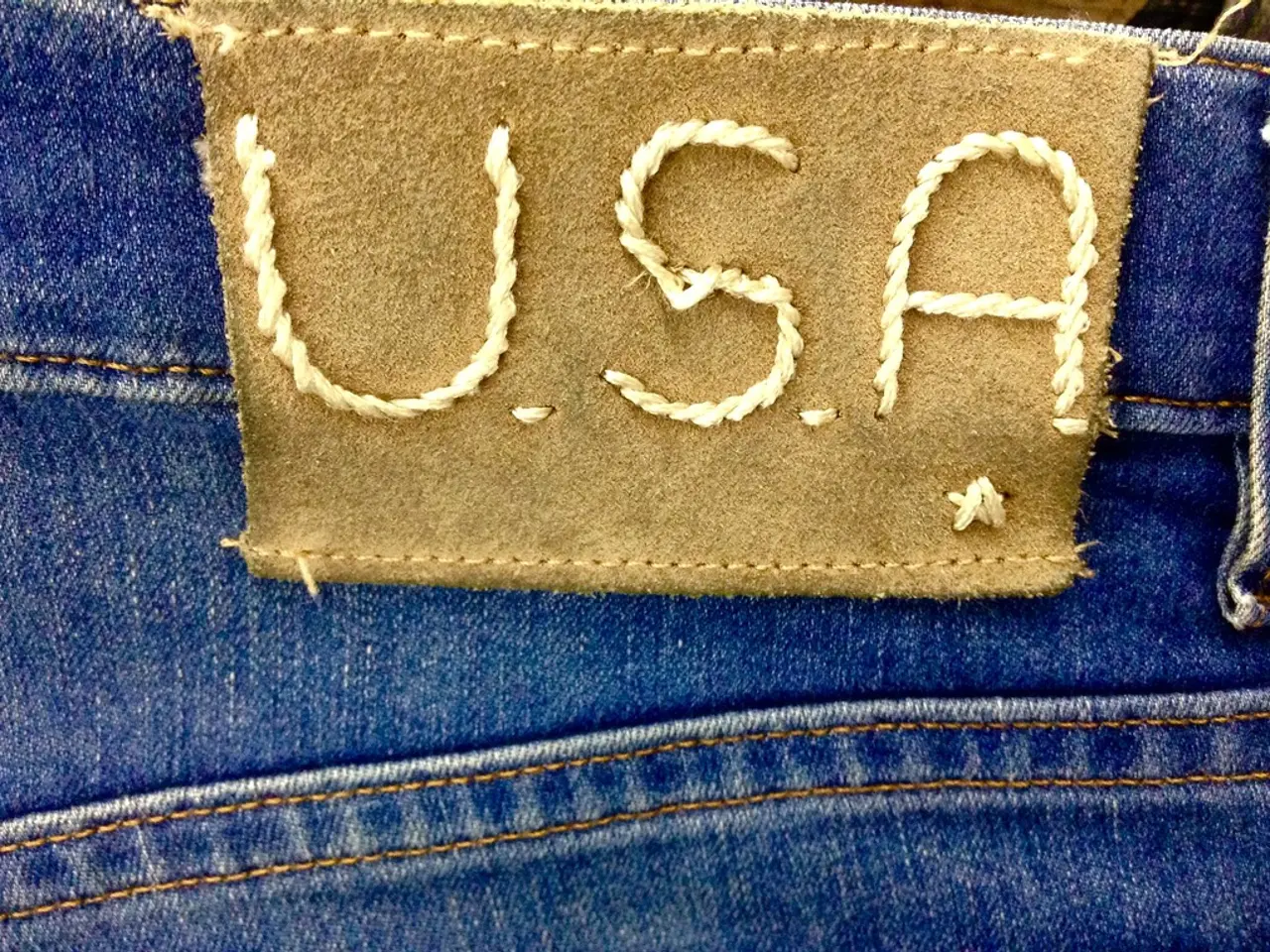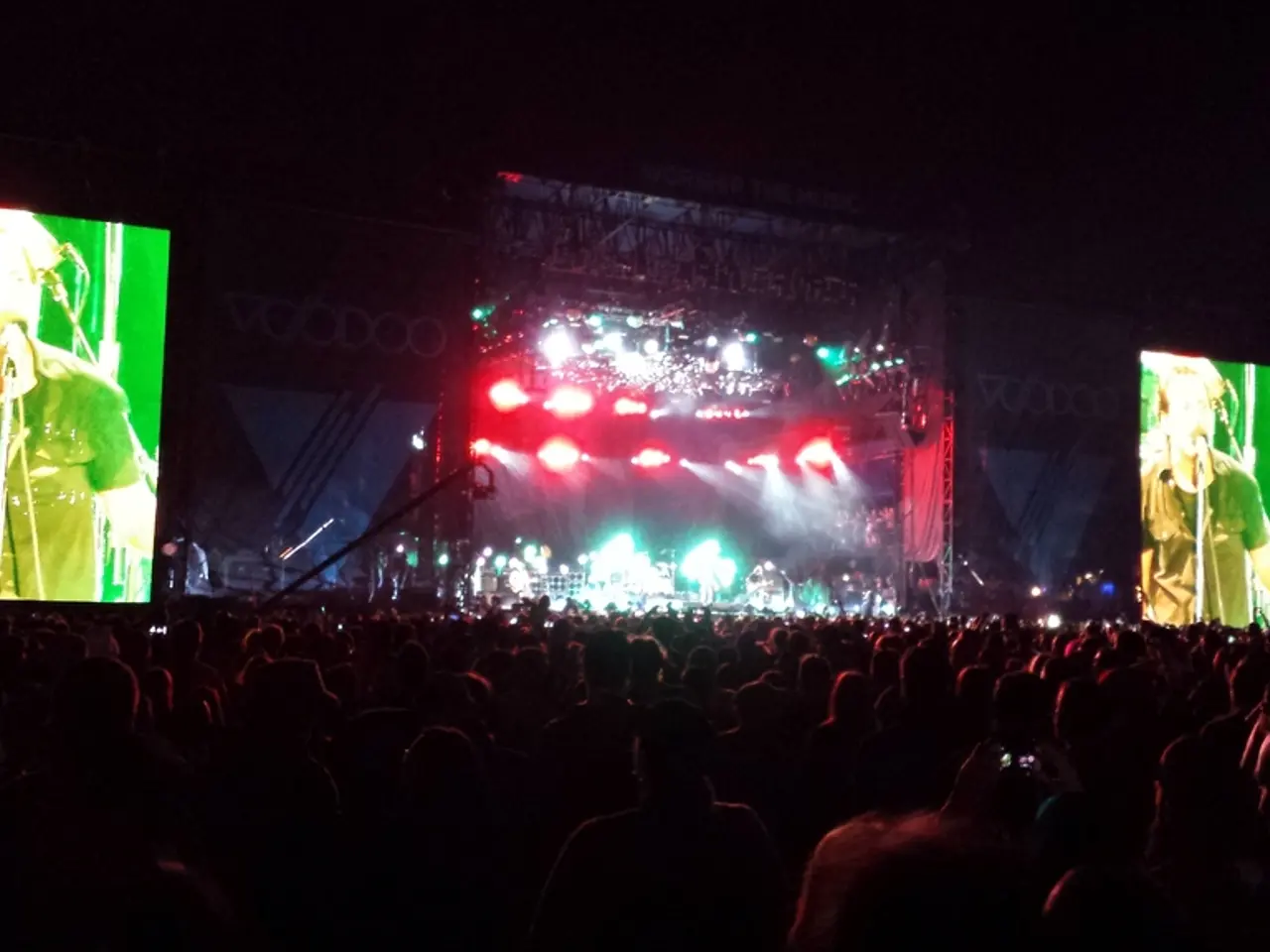Two Denim Ads, One Contentious Split in Narrative Marketing: Beyoncé vs Sydney Sweeney
In the realm of fashion advertising, two recent campaigns have sparked contrasting responses from the public: Beyoncé's Levi's campaign and Sydney Sweeney's American Eagle campaign. Both campaigns, launched in late 2024, have been met with varying degrees of praise and criticism, primarily due to generational interpretations of their marketing messages and the use of language in the ads.
Beyoncé's Levi's campaign, inspired by a 1985 commercial, was generally received positively and praised for its artistic direction and empowerment narrative. The campaign, which features a reimagined '80s laundrette, a new track titled 'Levii's Jeans', and a one-off Levi logo change, focuses on female strength and redefines classic denim imagery without controversial language, emphasizing pride and inclusivity in denim fashion. The campaign is seen as a modern reinterpretation of Levi's legacy through Beyoncé's influential persona, reinforcing positive themes rather than divisive ones.
In contrast, Sydney Sweeney's American Eagle campaign, which features the pun "great jeans" alongside a statement about genes ("Genes are passed down from parents... My jeans are blue"), sparked backlash due to perceived racial undertones. Critics, especially from younger and more socially aware audiences, interpreted the genetic language coupled with Sweeney's blonde hair and blue eyes as echoing outdated eugenics ideals and reinforcing problematic beauty standards linked to racial superiority. This triggered debates on how marketing messages can carry implicit, coded meanings that resonate differently with younger generations more attuned to social justice issues.
Social media amplified this controversy with users comparing the two campaigns. Many argued that the criticism of Sweeney’s campaign was not an attack on denim ads per se but concerned the subtle implication that certain genetic traits could imply superiority, which Beyoncé’s campaign did not convey. Some defended Sweeney, highlighting a perceived double standard in public reactions to similar visual themes presented by Beyoncé versus Sweeney, reflecting generational and cultural sensitivities in interpreting messages.
In summary:
| Aspect | Beyoncé's Levi's Campaign | Sydney Sweeney's American Eagle Campaign | |-------------------------------|------------------------------------------------|----------------------------------------------------| | Marketing message | Empowerment, reimagining denim iconography | Pun on "genes/jeans," unintentionally evoking genetic themes | | Public reception | Mostly positive, praised for artistry and empowerment | Controversial, criticized for racist/eugenics undertones | | Generational interpretation | Seen as inclusive and progressive by diverse audiences | Younger audiences sensitive to coded racial messaging | | Social media discourse | Compared favorably, defended as non-problematic | Sparked debates on racial implications and marketing ethics |
These reactions illustrate a generational shift where younger consumers critically analyze linguistic nuances and historical contexts in marketing, demanding greater awareness of implicit messages, compared to older generations that might focus more on aesthetic or brand loyalty.
As for the financial impact, the Levi's campaign, which is still running, saw a $1.4 billion increase in revenue and organic growth of around 9%. In contrast, American Eagle's stock rose briefly in response to the Sydney Sweeney campaign, but the controversy surrounding it may have long-term effects on the brand's reputation and sales.
These contrasting campaigns serve as a lesson in the importance of design, culture, and timing in building a future-proof brand and creating great advertising. Brands must be mindful of the messages they convey and the potential interpretations of their audience, especially in an era where social media can amplify both praise and criticism.
- In the 3D layout of the Levi's campaign, Beyoncé's reimagined '80s laundrette signifies a creative design that emphasizes denim fashion and female empowerment.
- The artistic direction of the Levi's campaign by a UX designer has been hailed as an innovative blend of pop-culture and branding, making it modern and appealing.
- In this redesigned campaign, the use of color and typography complements the narrative of pride and inclusivity, contributing to the overall success of the advertising.
- On the other hand, Sydney Sweeney's American Eagle campaign, in spite of its artistic elements, has been criticized for its use of language that carries implicit racial undertones, challenging the brand in the realm of entertainment.
- The decision to incorporate social-media-friendly elements into the American Eagle campaign may have backfired, as it sparked wide-ranging debates about problematic beauty standards and eugenics ideals linking race and superiority.
- The creative design of Sydney Sweeney's campaign, while aiming for witty wordplay, ultimately overshadowed the positive aspects of the brand and could potentially harm its future sales and reputation.
- The contrasting reactions to these two campaigns showcase the importance of a thoughtful 3D designer in creating effective advertising that resonates with diverse, discerning audiences—especially the younger generation.
- When crafting a design for a creative campaign, it is crucial for brands to carefully consider cultural sensitivities, historical contexts, and the potential interpretations of their audience, as these factors can significantly impact brand success in the digital age.







